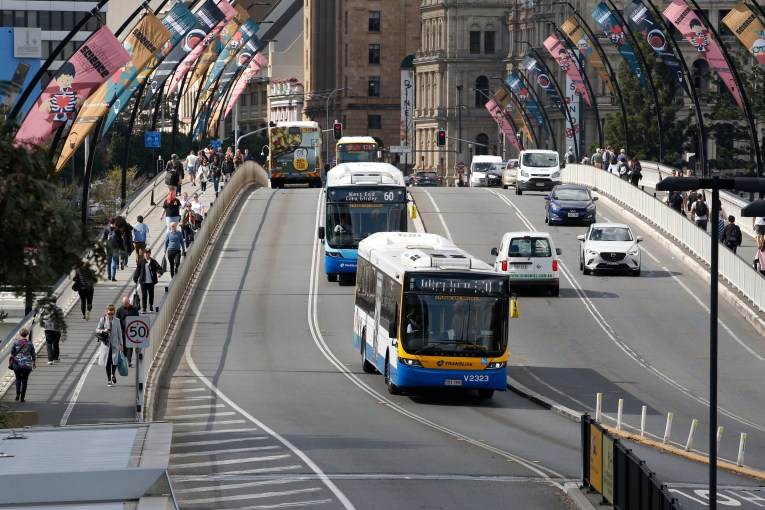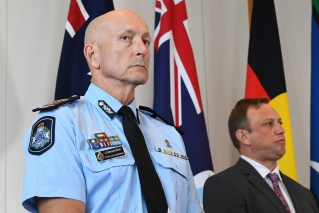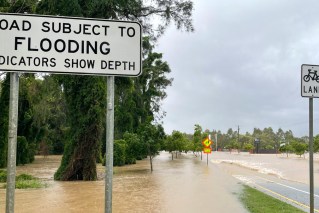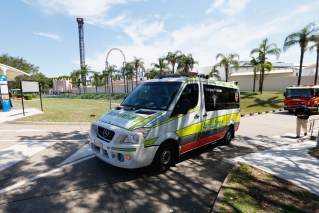Queensland man’s bid to turn a tree house into a permanent home
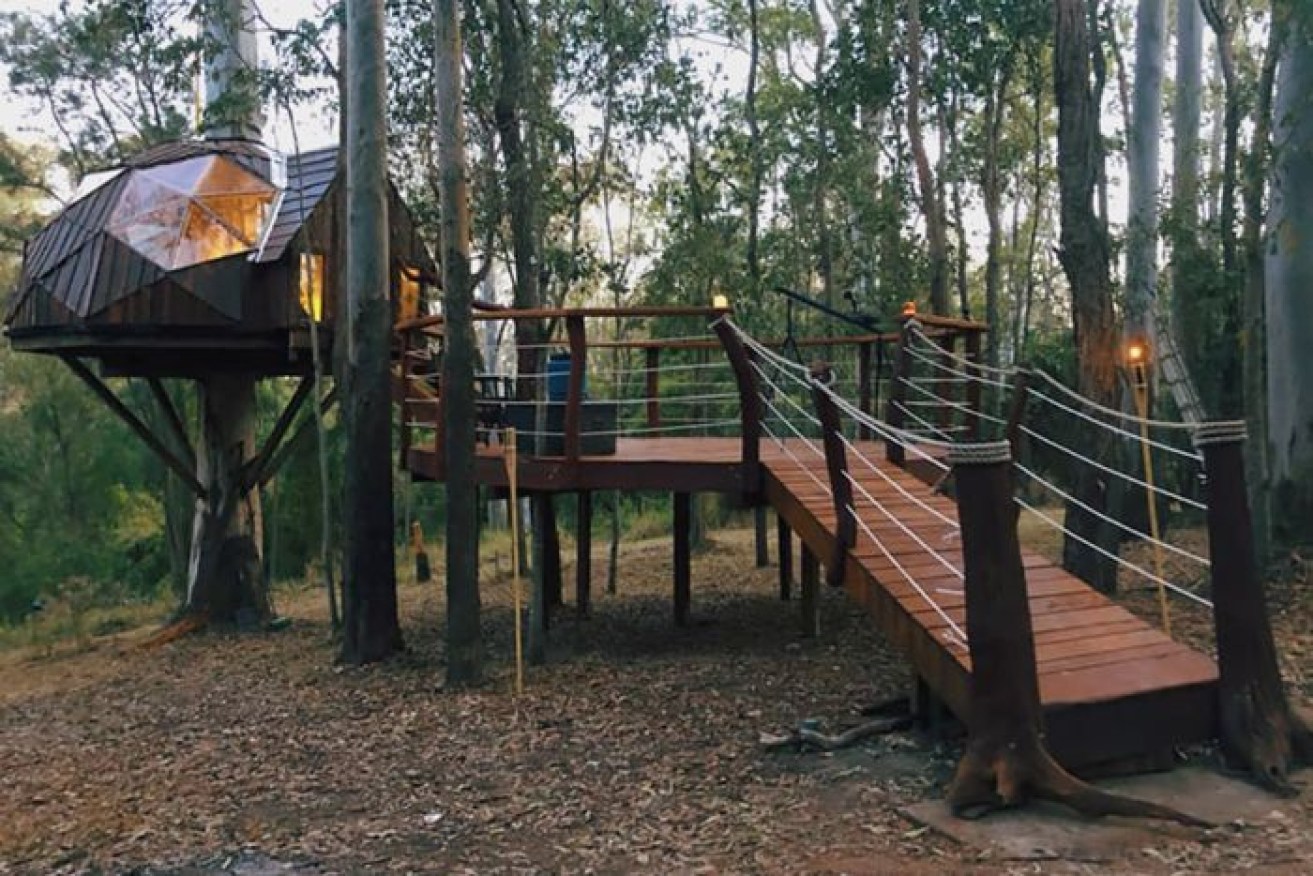
This tree house could be a home, but bushfire risk poses a particular challenge with council approvals. Photo: Anthony Aitken
You might have heard of tiny houses or shopping container homes — but what about living in a tree house?
Anthony Aitken has spent the past few years pouring all of his spare time and money into building an adult-sized tree house as a permanent abode.
He believes more Australians should be doing the same.
“There’s something magical about tree houses,” he said.
“I look at tree houses as part of that movement of container homes and tiny houses. It’s about utilising smaller spaces to live in and being conscious of how you use that space.”
The business owner from Logan, south of Brisbane, said the United States was leading the way in developing tree houses for domestic purposes.
“It’s a real movement overseas,” he said.
“There’s probably at least 12 professional tree house builders in the US and about 25 worldwide, and some of their tree houses are worth $300,000-$400,000 with bathrooms and showers.

Anthony Aitken built his tree house as a template for an even bigger version. Photo: ABC News/Anna Hartley
“I think we should be following in Australia.
“There really is something beautiful about being cradled entirely by the tree and surrounded by that energy.”
Quirky dream proves difficult
Mr Aitken started out in 2016 with some basic carpentry skills, then lined up a few talented mates to help.
The tree house sits on a 4-metre-high platform and rises 7 metres at its tallest point.
It comes complete with a deck, windows and a tree trunk that pierces it through the middle.
But he discovered building a tree house as an approved dwelling was going to be a challenge.
“I’ll be honest, I didn’t really know anything about building before I started this and each step along the way I’ve had to learn,” he said.
“The building certification is the hardest part. With the recent bushfires, too, that’ll make it harder with fire risk, but also getting people to understand it as a realistic way to live.”

Mr Aitken’s tree house is compact but stylish and well lit. Photo: ABC News/Anna Hartley
After years of navigating rules and restrictions, Mr Aitken plans to build a new, larger tree house that he hopes will become his home.
“I did this as a prototype, as something to show the concept to people,” he said.
“I’m planning on building an even bigger one to live in that’s more sustainable, with a rope bridge, a big deck, bathroom, shower, a loft platform — everything.
“It’ll be closer to 100 square metres of living space. I want to live in a tree house.”
Cool idea, but is it realistic?
The Queensland Building and Construction Commission (QBCC) said anyone building an alternative home needs to do their research.
“We are seeing a different type of building, modular and smaller buildings, being built in an ever-increasing number across Queensland,” QBCC commissioner Brett Bartlett said.
“The first thing anybody should do is engage with their local council and QBCC to understand their obligations, and most importantly their rights, as well.”
Logan City Council said it would take a lot of approvals for someone to legally live in a structure like a tree house, especially because of the bushfire risk.
“Any proposed dwelling of more than 10 square metres is required to have development approval. An arborist report and geotechnical report would also be required,” a spokesperson said.
“Height restrictions, bushfire zones, plumbing, drainage, stair and balustrade compliance would also need to be considered.”

Anthony Aitken (left) is putting the finishing touches on his prototype tree house with the help of skilled mates. Photo: ABC News/Anna Hartley
Benefits to ditching the mainstream
Alternative housing researcher Dr Heather Shearer from Griffith University said an increasing number of people in Australia and overseas were embracing non-traditional homes.
“There are lots of types of alternative housing like tiny homes, shipping container homes, yurts, earthships — which are built on tyres — and even underground homes, which a lot of people in very hot parts of Australia are already doing,” she said.
“I always say when people ask me about tiny houses, it’s probably only ever going to be a niche market or a step in the housing journey.
“But it can encourage people to live in more sustainable ways, and ways that don’t force them to indebt themselves with huge mortgages.
“The benefit of alternative housing is that it’s not a standard conventional house, so it allows people to express their personality and it’s more fit for purpose.”
Dr Shearer said more Australians needed to think outside the box when it came to sustainable, inexpensive housing concepts, but that tree houses, like tiny homes, would not solve the country’s home affordability crisis.
“Housing affordability is complicated in Australia,” she said.
“But the more alternative housing and smaller housing the better.
“So [building a tree house] could be a small aspect of addressing some issues of housing affordability, but it’s not the solution.”
-ABC
